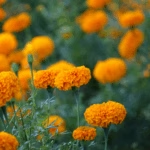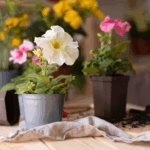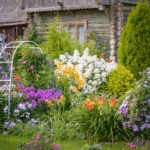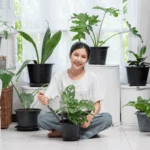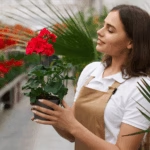Introduction
Container gardening is a popular way to grow plants in limited spaces such as balconies, patios, and small urban plots. The key to successful container gardening is choosing the right soil mix. Unlike garden soil, container soil needs to provide excellent drainage, retain moisture, and supply nutrients consistently.
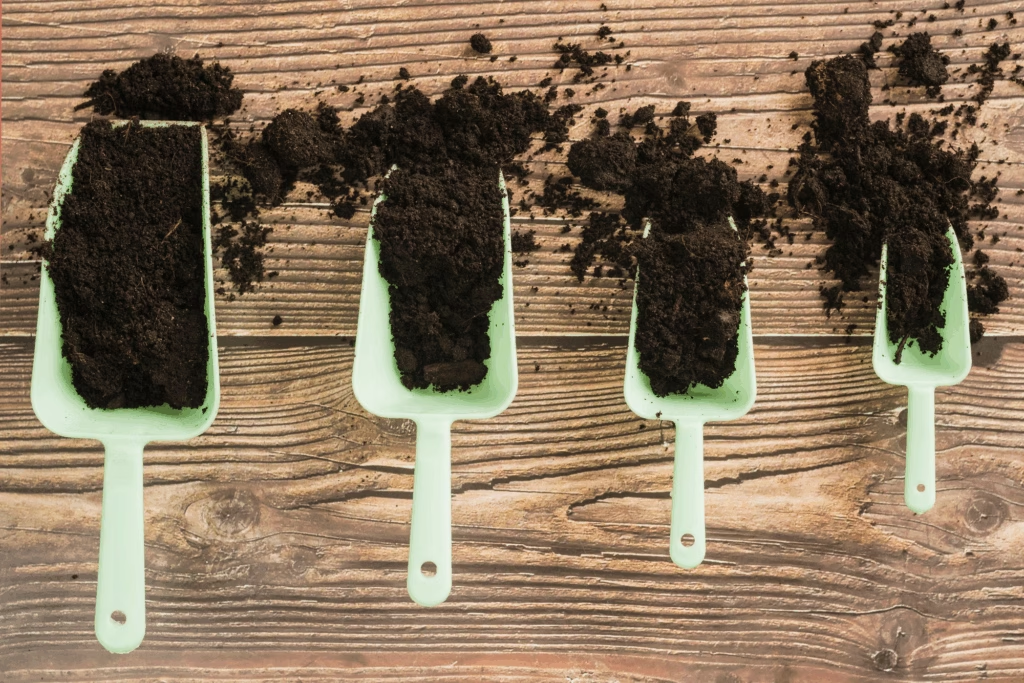
This guide explores the best soil mixes for container gardening, tips for improving soil health, and recommendations for growing vegetables, herbs, and flowers in pots.
1. Why Container Soil is Different
Plants in containers rely entirely on the soil mix for water, nutrients, and support. Unlike garden beds:
- Water drains faster from containers, increasing the risk of drought stress.
- Nutrients can be depleted quickly due to frequent watering.
- Poor-quality soil can compact, restricting root growth.
Tip: Avoid using garden soil directly in containers—it often compacts and lacks proper drainage.
2. Key Components of a Good Container Soil Mix
A high-quality container soil mix typically contains three main components:
- Organic Matter: Provides nutrients and improves moisture retention. Examples include compost, well-rotted manure, and coconut coir.
- Aeration Materials: Prevent soil compaction and improve drainage. Examples include perlite, vermiculite, and coarse sand.
- Moisture Retention Materials: Ensure consistent hydration between waterings. Coco coir, peat moss, and compost are commonly used.
Pro Tip: Mix components in the right proportions based on plant type—leafy greens need more moisture retention, while succulents require excellent drainage.
3. Recommended Soil Mixes for Different Plants
3.1 Vegetables
Vegetables are heavy feeders and need nutrient-rich soil:
Mix Recipe:
- 40% compost or well-rotted manure
- 30% garden soil (optional, sifted to remove clumps)
- 20% perlite or vermiculite
- 10% coco coir or peat moss
This mix ensures good drainage while retaining enough moisture for consistent growth. Fertilize every 2–3 weeks with organic liquid fertilizer for best results.
Best for: Tomatoes, peppers, lettuce, spinach, and herbs.
3.2 Herbs
Herbs generally prefer lighter, well-draining soil that does not retain excess moisture:
Mix Recipe:
- 50% compost
- 30% perlite or coarse sand
- 20% coco coir or peat moss
Tip: Mediterranean herbs like rosemary, thyme, and oregano thrive in soil with excellent drainage. Avoid heavy soil mixes that retain too much water.
3.3 Flowers
Flowering plants benefit from nutrient-rich, well-aerated soil:
Mix Recipe:
- 40% potting soil
- 30% compost
- 20% perlite or vermiculite
- 10% slow-release organic fertilizer
Hack: Add a small handful of bone meal or crushed eggshells to promote strong roots and abundant blooms.
Best for: Petunias, marigolds, zinnias, and geraniums.
3.4 Succulents and Cacti
Succulents and cacti need fast-draining soil to prevent root rot:
Mix Recipe:
- 50% coarse sand or grit
- 30% potting soil
- 20% perlite or pumice
Tip: Avoid compost-heavy mixes for succulents, as excess moisture can lead to fungal problems.
4. Enhancing Your Container Soil
You can improve pre-made potting mixes or create custom blends:
- Add slow-release organic fertilizers to reduce frequent feeding.
- Mix in worm castings for natural nutrient enrichment.
- Adjust pH with lime (to raise) or sulfur (to lower) depending on plant requirements.
- Use mulch on top of soil to retain moisture and suppress weeds.
5. Self-Watering Container Tips
Self-watering containers reduce maintenance but require soil that can absorb water efficiently:
- Mix 50% potting soil + 25% perlite + 25% compost for optimal wicking.
- Avoid soil that is too fine or heavy, as it can clog the water reservoir.
- Check soil moisture regularly to prevent overwatering.
6. Reusing Container Soil
Container soil can be reused, but nutrients deplete over time:
- Remove old plant roots and debris.
- Add fresh compost or organic fertilizer to restore nutrients.
- Mix in fresh perlite or coco coir to improve aeration and drainage.
- Avoid reusing soil that shows signs of pests or fungal disease.
7. Choosing the Right Potting Mix for Your Container Size
Container size influences soil composition:
- Small pots (under 6 inches): Use lightweight, moisture-retentive soil for fast-growing herbs and leafy greens.
- Medium pots (6–12 inches): Balanced soil mix for vegetables, flowers, and compact shrubs.
- Large containers (12+ inches): Nutrient-rich soil with good drainage for heavy feeders like tomatoes and peppers.
Hack: Larger containers allow for more flexible soil mixes and reduce watering frequency.
8. Benefits of Customized Container Soil Mixes
Creating your own soil mix offers several advantages:
- Tailored nutrient content for specific plants
- Better control over drainage and moisture retention
- Reduced risk of soil-borne diseases compared to garden soil
- Cost-effective compared to buying multiple pre-mixed soils
Tip: Experiment with small batches first to determine the best mix for your plants.
9. Soil Maintenance Tips for Container Gardens
Maintaining healthy soil improves plant growth and reduces problems:
- Loosen soil occasionally to prevent compaction.
- Check moisture levels frequently—containers dry faster than garden beds.
- Fertilize as needed, based on plant type and season.
- Top-dress with compost or worm castings every few weeks.
10. Organic and Sustainable Soil Practices
Eco-friendly practices benefit your plants and the environment:
- Use compost from kitchen scraps instead of chemical fertilizers.
- Reuse coco coir and perlite where possible.
- Avoid soil mixes with synthetic additives that can harm beneficial microbes.
- Rotate container crops to maintain soil fertility naturally.
11. Common Mistakes in Container Soil Management
Avoid these pitfalls to ensure healthy plants:
- Using garden soil directly, which compacts easily and drains poorly.
- Overwatering due to heavy, moisture-retentive soil.
- Ignoring nutrient depletion—container plants need regular feeding.
- Neglecting pH adjustment, which affects nutrient absorption.
12. Recommended Container Soil Mixes for Quick Reference
| Plant Type | Soil Mix Composition | Tips |
|---|---|---|
| Vegetables | 40% compost, 30% garden soil, 20% perlite, 10% coco coir | Fertilize biweekly |
| Herbs | 50% compost, 30% perlite, 20% coco coir | Avoid overwatering |
| Flowers | 40% potting soil, 30% compost, 20% perlite, 10% fertilizer | Add bone meal for blooms |
| Succulents/Cacti | 50% coarse sand, 30% potting soil, 20% perlite | Ensure fast drainage |
13. Internal and External Links for Further Reading
- Container Gardening Tips for Beginners
- Organic Fertilizer Guide
- External Source – University Extension on Container Soil
- External Source – USDA Guide to Potting Soil
Conclusion
The right soil mix is the foundation of successful container gardening. Whether growing vegetables, herbs, flowers, or succulents, understanding drainage, nutrient content, and moisture retention is essential. By customizing soil mixes, maintaining soil health, and applying sustainable practices, you can maximize yields and grow healthy, thriving plants in any container, even in small urban spaces.
Call to Action: Ready to elevate your container gardening? Visit Agzora.com for expert soil mix guides, premium seeds, and eco-friendly gardening tools to help you grow more with less effort.

